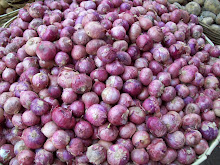”There was always someone on the other end of telephone,
interrupting my fantasies of suicide.
That’s a definition of a friend at most.”
Näin kirjoitti Audre Lorde (1934-1992) auto-mytografisessa omaelämäkerrassaan Zami. The New Spelling of My Name (1984). Tulin tietoiseksi Lordesta, kun opiskelin naistutkimusta 1990-luvulla, mutta läheiseksi ystäväksi jo edesmenneen ”naissoturirunoilijan” kirjoitukset tulivat muutama vuosi sitten Torontossa (http://www.english.uiuc.edu/maps/poets/g_l/lorde/lorde.htm). Lorden muistelmat kertovat karibialaistaustaisen mustan naisen tiestä runoilijaksi ja julkilesboksi 1950-60-luvuilla, elämästä rasismin ja köyhyyden keskellä New York Cityssä, ja myös vasemmistolaisuudesta, solidaarisuuksista ja luokkajaoista. Toronto on monessa suhteessa kuin miniatyyri-New York (ystävällisempi, mutta yhtä dynaaminen ja monikulttuurinen), siksi Lorden tekstit alkoivat elää toisella tavalla siellä, missä tapasin samankaltaisia naisia, naisia, jotka myös löysivät inspiraation Audren jättämästä henkisestä perinnöstä. Tästä lähtien olen kuljettanut Audren runoja ja proosaa mukanani missä tahansa olen kulkenut, ja sisällyttänyt hänen tekstejään melkein jokaiselle opettamalleni yliopistokurssille.
Audre on naisikonini, yksi heistä, ei missään nimessä ainoa, mutta keskeinen. Palaan hänen kirjoituksiinsa erityisesti silloin, kun koen olevani lopussa, voimaton, toivoton. Audre oli usein myös, hän ei tunteile siitä, kuinka mustat naiset puhaltavat yhteen hiileen kaiken kokemansa kurjuuden ja sorron keskellä, vaan antaa asioiden näyttää niin synkiltä kuin ne pahimman epätoivon hetkellä ovat. Opiskelijat usein valittavat Lorden runojen ankeudesta, siitä olen päätellyt, että makuni saattaa olla erikoinen – pidän synkistä maisemista ja metaforista, joku osa minua on kai ollut jossain siellä. Ja silti: jostain nurkan takaa tai puhelinlangan päästä löytyy aina ystävä, toinen ihminen, joka ei välttämättä ymmärrä kaikkea, mitä sanot, mutta hän on silti läsnä.
Minulla on ystävä, joka kirjoittaa runoja ystävyydestä. Kun luen niitä, tiedän, että välillämme on pieni telepaattinen yhteys. Minua kiehtoo se, että joku päättää kirjoittaa vuoden verran vain ystävyydestä, keskittää ajatusenergiansa vain yhden teeman pohtimiseen. Ystävyydestä kirjoittaminen on huomattavasti tärkeämpää kuin rakkaussuhteesta; oikeastaan en usko, että onnellisessa parisuhteessa elävien kuuluisi kirjoittaa mitään toisistaan tai toisilleen, sillä he elävät onnensa todeksi päivittäin lihassa ja veressä. Eikä varsinkaan onnettomien kannata kirjoittaa toisilleen – mieti miljoonien väärinymmärrysten määrää, kun rakkaudesta tulee pelkkä teksti. Uskon, että itseään ja omia napanöyhtiään voi terapoida kirjoittamalla, muttei tilaa kahden rakastuneen välillä. Tässä ainoastaan läsnäolo, puhe, yhteisesti vietetty aika samassa tilassa, voi auttaa.
Kukaan ei jaksa lukea lällyjä runoja molemminpuolisesta autuudesta, ja sydänsuruissa vellova runous taas jaksaa kiinnostaa vain muita sydänsuruisia. Rakkausruno on kiinnostava vain silloin, jos se kytkeytyy johonkin suurempaan ihmiskuntaan liittyvään teemaan - historiaan, filosofiaan, teologisiin kysymyksiin, maailmanpolitiikkaan. Ystävyys on vahvempi aihe aina, siinä on enemmän mahdollisuuksia, nyanssieroja, enemmän rehellisyyttä ja tarkkuutta. Suoraa puhetta silloin, kun tuntee ja sydämessään tietää, ettei loukkaantumisen mahdollisuutta ole.
Hienoimpia asioita ystävyydessä on käveleminen yhdessä. Minulla on muutamia ystäviä, joiden kanssa kävely on nautinnollisempaa kuin esimerkiksi kahvilassa istuminen. Sanon näin, vaikka olen todellinen kahvilahai. Ehkä he ovat minua tietoisempia kävelemisen hyvää tekevästä voimasta. He ovat ihmisiä, jotka eivät epäröi pysähtyä keräämään kiviä ja kukkia valtateiden varsilta, ottamaan valokuvia jostain arkkitehtonisesta yksityiskohdasta tai kiertämään monimutkaisten maisemareittien kautta, mutta samalla kävely heidän kanssaan on täysin synkronista. He kutsuvat poukkoilemaan kanssaan, vetävät mukaansa kävelemään toisin.
Luulen, että Audre olisi pitänyt tällaisesta, ja että Audren henki seuraa mukana silloin, kun ystävät kävelevät kaupunkia halki puhki poikki niin uponneina elämään ja ajatusten virtaan välillään, ettei suunnalla tai määränpäällä enää ole väliä.
